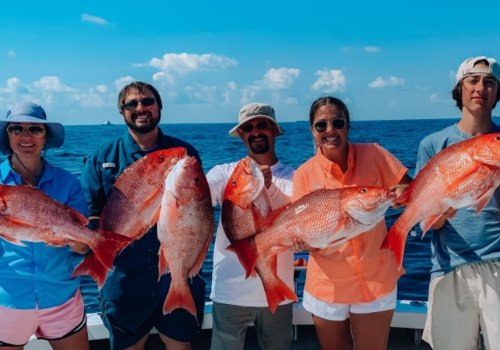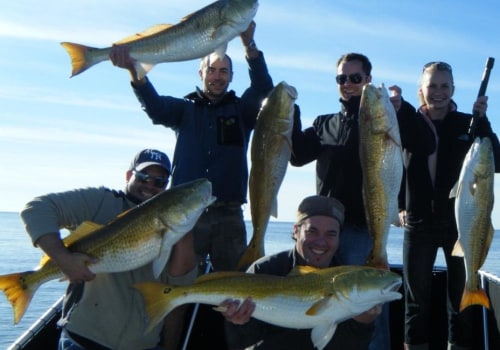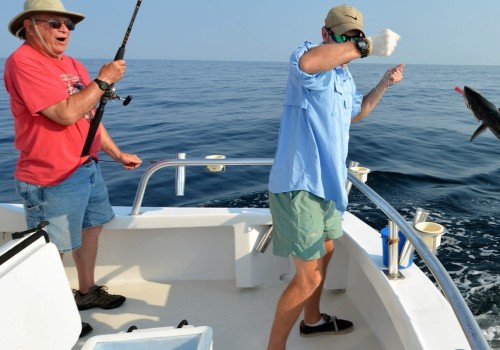Fishing in saltwater can be a thrilling experience, but it requires the right equipment. Whether you're fishing offshore, inshore, or from shore, the best saltwater fishing rods will deliver your bait and help you land big fish. Not only do they need to be tough enough to survive the hectic world of ocean, bay, and backwater, but they also need to be sensitive enough to detect subtle bites in deep water. In this comprehensive guide, I'll explain what to look for when buying a saltwater fishing rod and review some of the best models on the market.
BlankThe blank is the backbone of a fishing rod. It is the conical composite fiber tube that is the basis for the grips, the reel seat and the line guides. Fishing rods are made of fiberglass or graphite, also called carbon fiber. And some rods are made from a combination of materials.
In short, fiberglass is cheaper and stronger, but less sensitive. Graphite is lighter and more sensitive, but it is also more expensive and less durable than fiberglass and is often labeled with weight ratings such as 24 tons or 30 tons to indicate material stiffness. A higher number is lighter and stiffer, but also more brittle. I don't put too much weight on this designation.
For me, the construction of the rods is more important than the properties of the raw materials, and I have not found any correlation between the weight numbers and the quality of the rods.
Line Guides
Line guides are the most important component affecting launch distance and combat power. They also tend to be the first thing that breaks. When casting, the line guide's function is to pick up the line as it exits the reel and direct it off the rod with the least resistance. To fight a fish, the line guide transfers combat power from the reel to the fish. The strongest rod guides are one-piece stainless steel or titanium.Linear guides with a ceramic or composite insert melt further, but appear to break faster. Advanced line guides with ceramic inserts are more sensitive to telegraphing every bite.
Reel Seat & Grips
The reel seat and grips are often overlooked, until a big fish takes the reel off the rod or pulls the rod out of its hands. For light action rods, reel seat and grips improve sensitivity. In my experience, the best reel seat is light and stiff and even exposes part of the rod blank to feel the slightest bite. The grips are also lightweight and narrow, with a comfortable feel for all-day throwing.On heavy rods, the reel seat and grips prevent a big fish from breaking the party. High-impact metal or graphite clamps securely connect the reel to the rod. When I go to buy rods, I take my reel to the tackle shop. I gather all the rods into the appropriate class, and then test the weight, balance and grip of the reel on the rod. In fact, I don't hesitate to run the line through my eyes and tie a decoy to test the action. When I think about how many hours I'm going to spend with a fishing rod, I put a lot of effort into choosing a perfect mate.
If you can, get one before you buy it.
Daiwa Proteus Rods
With more technology than would fit in a 10-gallon hat, Daiwa Proteus rods are lighter and more durable than most others, improving your overall fishing experience. Daiwa has incorporated all their latest advancements in rod construction into a series of high-quality saltwater rods that anyone can afford. The HFV Nano Plus blank design has an incredible weight-to-strength ratio that helps prevent your rod from twisting under pressure. You can feel this result when you're fighting a big fish instead of fighting your fishing rod - more power is transferred from your rod to your line to help lift your catch and keep your line guides perpendicular to water when you have a big one hooked. The blank uses Daiwa's Braiding X resin and material combination that makes your rod incredibly strong and durable. Daiwa has also added Fuji's latest FazLight Tanglefree guides with ceramic center ring for longer throws and less friction. One of my favorite features is Fuji's rear reel seat which uses a locknut to prevent your clamp from loosening while your reel is under pressure.Several Proteus models feature Winn grips which are dense polymer grips that offer more grip and a softer feel while being stronger than EVA or cork.








